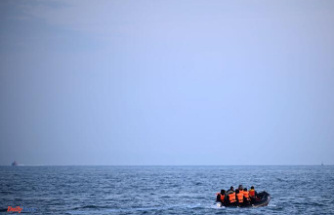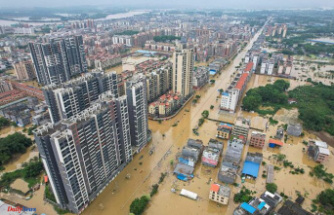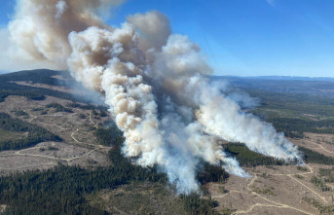You will not believe that a 40-ton truck and almost 14 meters in length that consumes about 25 liters of diesel every 100 kilometers can be considered ecological. Heavy transport vehicles travel hundreds of thousands of kilometers, which inevitably increases its coefficient of emissions as the engine is deteriorating by use. And yet, we can catalog this ECOTRUCKSTERS by TARUGA as a step to cleanse a sector that contributes to 12% to the production of greenhouse gases.
The key is in painting. Those leaves drawn and colored this week in Madrid on the left side and the back of the truck, as well as the logos that cover the surface on the other side, are made with photocatalytic painting of a Spanish brand, Graphenstone. It is composed of artisan lime and graphene technology. This material absorbs carbon dioxide and also contains silver ions that keep viruses and diverse bacteria at bay.
Upon receiving the light, the painting of the TruckSters by Taruga 'Eat' this pollution in the same way as a tree for three months. That is, the 12 kilograms of paint used to cover the Volvo eliminates four kilos of CO2.
Therefore, the creators of this monster with a botanical camouflage conclude, we would be attending at the beginning of a new ecosostanible conception of the transport of goods by road.
The surface painted on the Eco Trucksters by Taruga is 68 square meters and the 12 kilos of paint have been used in a lower grip layer, a white base and green and ocher colors, brush, of botanical decoration. One of the things that artists appreciate when using this painting is that it is not acrylic, it does not smell and not irritate my eyes.
Both Gabor Balogh, co-founder of the heavy transport company to Relay Trucksters, such as David Murcia, CEO of the international network of Taruga artists, see in the future many more trucks like this eliminating among them large amounts of CO2 all over the planet. And they are proud to have taken the first step, which is called entrepreneurs.
Balog hopes to count very soon, next year, with a fleet of 300 electrified trucks to further reduce gas emissions with greenhouse effect. All with the artistic and ecological creations of artists who recruit Taruga, a company that has already used this type of painting in large murals such as those that can be seen at the Manises airport (Valencia) or in other public buildings such as hospitals or companies Private
Gabor Balog's talks about "a green lung circulating on the road" and is aware that "road transport supposes 12% of CO2 emissions worldwide. Therefore, this is a message for the whole industry, that We can all do something to end the greenhouse effect and climate change. "
"Sustainability is the future of decoration," says David Murcia, which also employs the word "message" to define the performance that his company has tied together with TruckSters. Taruga collaborates in many other ways with sustainability, both environmental and social, incorporating people in danger of social exclusion, supporting solidarity entities or creating scholarships for artists and employment in "a very punished sector by unemployment".
Balogh and Murcia met Joan Roig's shuttle project, an accelerator of companies. And they came to convince that this collaboration could be a good step for man and humanity. "Now what we need is visibility," they say almost in unison. "That this is necessary to change the ways of thinking, more projects are needed in this line. Not only do we have to think about initiatives, but take the step to create them and that they grow up".
In transport, as in any other sector, it is increasingly interesting for companies a level of personalization that this type of wall works will guarantee its owners. At the moment, ECOTRUSTERS BY TARUGA already undertook its work trip throughout Europe devouring part of the CO2 that it issues through its exhaust pipes.
Date Of Update: 26 September 2021, 21:35











